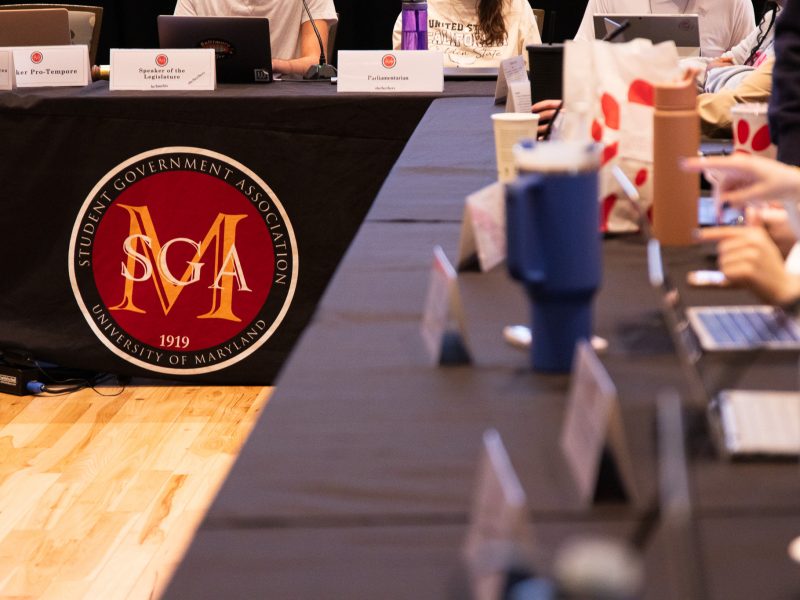Disclaimer: Current student regent Dhruvak Mirani is a former Diamondback opinion columnist.
The University of Maryland is part of a broader system of public higher education institutions throughout the state of Maryland.
The University System of Maryland, formed in 1988, is made up of 12 public universities, three regional higher education centers and a system office.
The Diamondback spoke with university system leadership to understand how it functions.
What is the university system composed of?
The system’s 12 member institutions consist of:
- Bowie State University
- Coppin State University
- Frostburg State University
- Salisbury University
- Towson University
- University of Baltimore
- University of Maryland, Baltimore
- University of Maryland, Baltimore County
- University of Maryland, College Park
- University of Maryland Eastern Shore
- University of Maryland Global Campus
- University of Maryland Center for Environmental Science
Three regional higher education centers also comprise the system:
- Universities at Shady Grove
- University System of Maryland at Hagerstown
- University System of Maryland at Southern Maryland
The system office, the university system’s third and final unit, bridges these 15 member institutions and Maryland’s governing bodies, according to the system’s website.
The entire office is led by a chancellor and includes eight smaller offices. Current chancellor Jay Perman has held the position since 2020.
Each office, headed by a senior vice chancellor, specializes in areas of higher education operation, such as academic and student affairs or administration and finance.
The system office supports operational functions by coordinating the review of the system’s financial records and issuing debt for universities within the system,senior vice chancellor of administration and finance Ellen Herbst said.
What is the USM Board of Regents?
The system office also staffs the Board of Regents, the 21-member governing body overseeing the university system and its academic, financial and administrative affairs.
The board and its seven committees, which each focus on operational areas, gather periodically in public meetings and closed sessions to vote on certain university policy, according to Herbst.
The board approves certain academic projects and programs, Herbst said, and appoints the university system chancellor and the presidents of the system’s 12 universities.
It also approves annual university room and board rate fees, according to the university system’s records.
But the system’s member institutions rarely work with the Board of Regents directly, Herbst said. Instead, they go to the system office with questions and policy proposals, which then drafts up reports for the board to consider so they can “make informed decisions.”
[UMD will see more than 10% board fee increase for 2026 fiscal year, highest in last decade]
Dhruvak Mirani, a junior computer science and government and politics major at this university, is one of the board’s two student regents.
Student regents serve “staggered terms,” meaning that they each serve two-year terms and a new one is elected every year, Mirani said. They act as non-voting board members their first year and become voting regents their second year.
Mirani, whose term began in July 2024, participates in meeting discussions and frequently collaborates with board members, university administrators and stakeholders from the system’s other universities, he said.
What is the university system’s economic value?
University system institutions recorded more than $1.6 billion in “research and development expenditures” in fiscal year 2023 and granted $101 million in need-based financial aid to undergraduates in fiscal year 2024, according to data published on its website.
The system’s data reports the annual economic impact as $10.4 billion, which funds more than 55,000 jobs within the state of Maryland.
How does USM’s budget work?
The university system receives annual funding from the state government. About 60 percent of the budget goes toward salaries according to Herbst. It also covers branding costs and allows the system to bring in outside auditors to conduct financial reports.
The institutions within the university system have allocated separate funds for costs including tuition fees, salaries and research, which they receive directly from the state or from research grants, she added. Their funds do not go through the system office.
[Maryland legislature finalizes budget plan that reduces USM funding by $155 million]
What does the university system budget look like this year?
The Maryland General Assembly approved a budget plan for fiscal year 2026 last month that would reduce university system funding by $155 million.
These cuts amount to about 7 percent of the university system office’s budget and 7 percent of each member university’s budget, according to Herbst .
The system’s individual institutions are each responsible for creating their own budget plans that take into account these cuts, although the system office will be available to support them throughout the process, Herbst said.
In response to a request for comment about the effect of the cuts, Herbst directed The Diamondback to a testimony given by Perman in January regarding the then-proposed budget cuts, which amounted to about 5 percent at the time.
“The cut we’re sustaining will be difficult for our universities, for the faculty and staff they employ, and for the students they educate,” Perman said.
Perman listed workforce reductions, cuts to operational and facilities spending and tuition increases across universities as possible impacts of the system’s reduced budget. Up to 400 jobs could be affected, he estimated in January.
“These efforts will not be easy or their impact painless,” Perman said. “We are committed to keeping Maryland public higher education exceptional and affordable, and helping every one of our students achieve the degree, and the dream, that first brought them to the University System of Maryland.”
CORRECTION: A previous version of this story misstated that Mirani was appointed in June. His term began in July. A previous version of this story also misstated that student regents are elected every other year. A new student regent is elected every year. This story has been updated.



